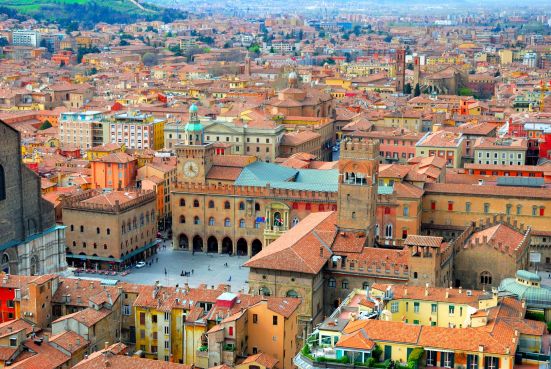Ravenna is a small, quiet city of brick palaces and cobbled streets, whose magnificent monuments are the only indicators of its storied past. In fact, its greatest assets are also its oldest; the art treasures for which it is known outshine anything the last thousand years have brought.
Ravenna could be visited in a day on our Private Ravenna Mosaics Tour from Venice, although it probably makes more sense to spend the night there as you make your way to or from other major Italian cities. For tourists based in Ravenna, we also offer Private Walking Tours of Ravenna.
Ravenna rose to power back in the 1st century B.C. under the Emperor Augustus, who built a port and naval base at the nearby Classis. As Rome 's power declined, Ravenna was made the capital of the Western Empire in AD 402. A role it retained during the Ostrogoth & Byzantine rule in the 5th & 6th centuries.
Visitors to modern day Ravenna will find it hard to imagine the city as a major port lying on the Adriatic Sea, since Roman Times the sea has receded and nowadays the port of Ravenna is connected by a canal to the open waters of the Adriatic. Although, recent excavations in the fields in and around the nearby settlement of Classe have unearthed ancient vessels and parts of the old port of Ravenna.
Because Ravenna spent much of its history looking to the East, its greatest art treasures show how much Byzantine influence effected the city, especially the Ravenna mosaics that are the finest in Western art. The most important sites featuring the fabulous mosaics are the Tomb of Galla Placida, the Basilica di San Vitale, the Baptistery of the Arians, and the church of Sant' Apollinare Nuovo, as well as the church of Spirito Santo and the Capella Sant'Andrea.
Other points of interest include the national museum that is located next to the Church of San Vitale. It contains artefacts of ancient Rome, Byzantine fabrics and carvings, and other pieces of early Christian art housed in a former monastery.
Near the church of St Francis, you'll find a small neoclassical building that is the Tomb of Dante. Exiled from his native Florence, the great poet, author of the Divine Comedy, died here in 1321. The Florentines have been trying to reclaim their famous son for centuries, but the Ravennan's refuse to give him up, arguing that Florence did not welcome him in life, so it doesn't deserve him in death.
The mausoleum of Theodoric is another interesting monument to see as you make your way around the centre of Ravenna. Close to the remains of the castle of Ravenna, the building is a marvel of engineering that was constructed in 526. Theodoric was the son of the king of the Ostrogoths and his mausoleum is made of giant blocks of white Istrian stone crowned with a unique circular stone of over 250 tons in weight.
The city centre is very compact, and is easily covered on foot, although the city of Ravenna does offer the use of free-bicycles stationed throughout the city for those who don't worry about the cobbled streets. The influence of nearby Venice is very noticeable in the main square of the city with the winged lion overseeing the comings and goings on modern-day Ravennan's.














